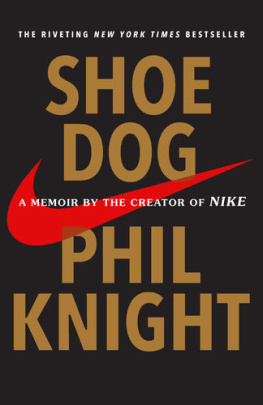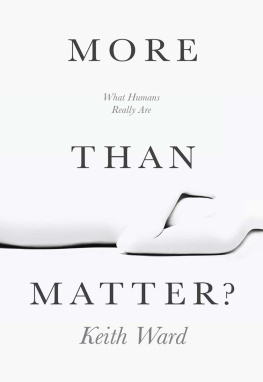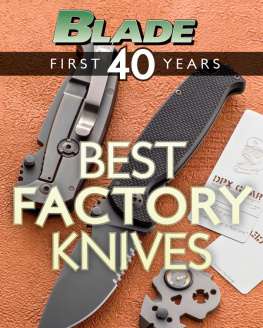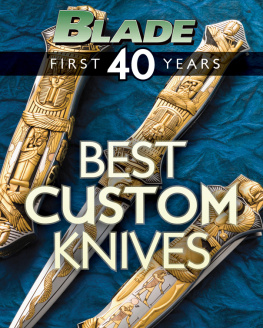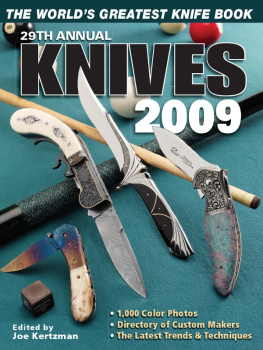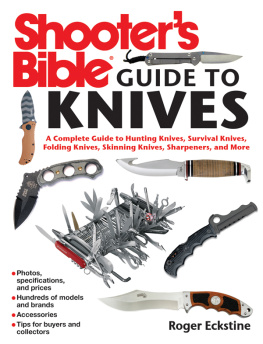Ward - An Edge in the Kitchen
Here you can read online Ward - An Edge in the Kitchen full text of the book (entire story) in english for free. Download pdf and epub, get meaning, cover and reviews about this ebook. year: 2014;2008, publisher: HarperCollins e-Books, genre: Home and family. Description of the work, (preface) as well as reviews are available. Best literature library LitArk.com created for fans of good reading and offers a wide selection of genres:
Romance novel
Science fiction
Adventure
Detective
Science
History
Home and family
Prose
Art
Politics
Computer
Non-fiction
Religion
Business
Children
Humor
Choose a favorite category and find really read worthwhile books. Enjoy immersion in the world of imagination, feel the emotions of the characters or learn something new for yourself, make an fascinating discovery.

- Book:An Edge in the Kitchen
- Author:
- Publisher:HarperCollins e-Books
- Genre:
- Year:2014;2008
- Rating:4 / 5
- Favourites:Add to favourites
- Your mark:
- 80
- 1
- 2
- 3
- 4
- 5
An Edge in the Kitchen: summary, description and annotation
We offer to read an annotation, description, summary or preface (depends on what the author of the book "An Edge in the Kitchen" wrote himself). If you haven't found the necessary information about the book — write in the comments, we will try to find it.
Ward: author's other books
Who wrote An Edge in the Kitchen? Find out the surname, the name of the author of the book and a list of all author's works by series.
An Edge in the Kitchen — read online for free the complete book (whole text) full work
Below is the text of the book, divided by pages. System saving the place of the last page read, allows you to conveniently read the book "An Edge in the Kitchen" online for free, without having to search again every time where you left off. Put a bookmark, and you can go to the page where you finished reading at any time.
Font size:
Interval:
Bookmark:
AN
EDGE
IN THE KITCHEN
THE ULTIMATE GUIDE
TO KITCHEN KNIVES
How to Buy Them, Keep Them Razor Sharp,
and Use Them Like a Pro
CHAD WARD
WITH PHOTOGRAPHS BY
Bryan Regan

FOR MY WIFE, LISA,
who, for reasons known only to her,
puts up with this nonsense.

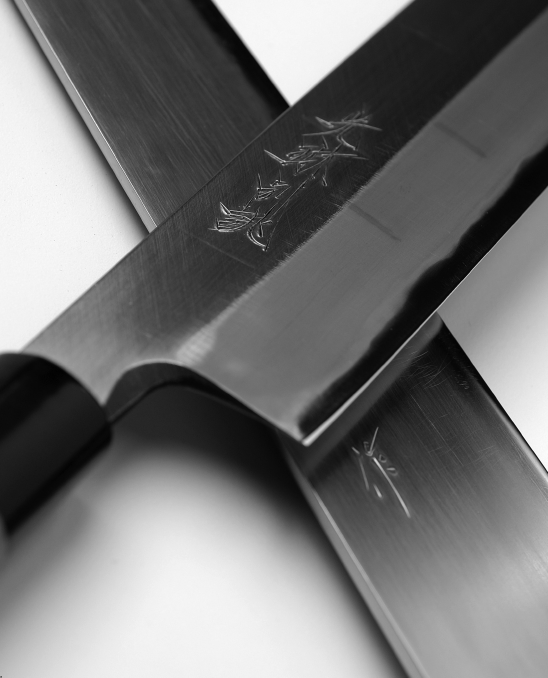

Why write a book about kitchen knives? Because kitchen knives changed the world. Because they are the oldest and most important tool known to humankind. As Michael Symons wrote in A History of Cooks and Cooking, The use of knives does not depend on culture, it is culture. If you include our prehuman ancestors, we have been using kitchen knives for about two and a half million years. Thats a million years before fire became fashionable, just to put things into perspective. From those first crude stone edges to the sleek ultramodern hardware lining the walls of your local kitchen emporium, knives allow us to perform the most basic human taskpreparing and sharing food.
Two and a half million years ago, Homo habilis (handy man) first started chipping crude stone tools, including cutting edges. These tools played a significant role in the massive evolutionary changes that quickly followed. The ability to butcher and share scavenged meat, much richer in calories and nutrients than a strictly plant-based diet, led to rapid brain development, interdependent communal living, and improved communication skills. By the time the recognizably human Homo erectus hit the scene, they came equipped with big brains, advanced tools, and the small teeth that indicate a diet based on preprocessed (that is, cut-up) food. Puts your chefs knife in a new light, doesnt it?

The other reason for a book like this is the current culinary renaissance we are experiencing all over the world. We seem to have shaken off the perception of preparing meals as kitchen drudgery and embraced making and sharing food as something fun to do. Cooking is cool. And kitchen gear is even cooler. Those who are really into cookingand those who would like to bedemand top-notch tools. Good knives are the cornerstone of any kitchen.
Despite our long history with knives, most of us are woefully uninformed about our kitchen knives. We are afraid to spend too much. Many of us are secretly afraid of them. We are intimidated by our knives when they are sharp, annoyed by them when they are dull, and quietly ashamed that we dont use them well and cant keep them sharp. Thats a sad state of affairs for a species that has been using these things for nearly as long as we have been walking upright. Are we so familiar with kitchen knives that we have taken them for granted? Why is it that no one ever shows us how to use our knives properly? Or shows us how to keep them sharp? How do we know if we are buying the right knives? Can we buy good knives without breaking the bank? Should we get the ones that the famous TV chef uses? And why are chefs so obsessed with their knives anyway?
Knives are the cooks oldest tool, the most essential, the most trusted. Their whole purpose is sharing.
MICHAEL SYMONS , A History of Cooks and Cooking

This book is designed to answer some of those questions. An Edge in the Kitchen ties together illustrated step-by-step instruction with a little history, metallurgy, anthropology, kitchen science, and, I hope, a little humor. To make things easier, the book is divided into three basic sections: how to choose good knives; how to use them like a pro; and how to keep them razor sharp. But there is much more to know about kitchen knives than sharpening techniques and chiffonade. You will discover what a cow sword is (and why you might want one), why chefs are abandoning their heavy German knives in droves, and why the Claw and the Pinch, strange as they may sound, are in fact the way to make precision veggie cuts with speed and style. Along the way there are some interesting tidbits that show how kitchen knives have been shaped by cuisine and culture and vice versa.
THE AMERICAN SHUFFLE
O ne example of how knives have shaped culture is the unique American habit of switching the fork from the left hand to the right and back as we eat. Ever wonder why we do this awkward little move? It all came about because of a change in knife making in seventeenth-century France.
From the Middle Ages until the end of the 1600s, most diners ate with their fingers and a knife, which they brought with them to the table. Hosts and innkeepers didnt provide tableware. Except for the extremely wealthy who owned separate eating knives, these knives were used for everything from cutting rope to defending ones honor. These long, slender knives continued to be used as weapons and posed the conceivable threat of danger at the dinner table. However, once forks began to gain popular acceptance, there was no longer any need for a pointed tip at the end of a dinner knife to hold and spear the food. In 1669, Louis XIV of France decreed all pointed knives on the street or the dinner table illegal. The claim was that this would reduce violence. Other accounts of the story suggest that Cardinal Richelieu was so disgusted by his dinner guests constantly picking their teeth with tips of their knives that he had his house knives ground down. Others in the court followed suit and the king made it official.
By the beginning of the eighteenth century, knives imported to the American colonies had blunt tips. However, colonists were not shipped any forks, which were still somewhat exotic. Because Americans had very few forks and no longer had sharp-tipped knives to spear food, they had to use spoons in lieu of forks. They would use the spoon in the left hand to steady the food as they cut it with the knife in the right. They would then switch the spoon to the opposite hand in order to scoop it up to eat. This distinctly American style of eating continued even after forks became commonplace in the United States. 
As with many things in life, this book was born from failure. Many years ago I purchased my first real set of knives. This was back when dinosaurs roamed the earth (according to my kids), water was still free, and those of us with personal computers were astonished by Tetris in all its blazing 8-bit glory. The big-name German knives dominated the market. I knew a little about knives. I had cooked in restaurants throughout high school and college. Hefty Teutonic cutlery was what the real pros used, at least the trained chefsline cooks used whatever garbage knives were on sale. A big block of high-priced steel from Solingen was what you bought when you wanted to announce to the world that you had arrived and were ready to cook, to prove that you were serious. So I did. And they were great. For a while.
Font size:
Interval:
Bookmark:
Similar books «An Edge in the Kitchen»
Look at similar books to An Edge in the Kitchen. We have selected literature similar in name and meaning in the hope of providing readers with more options to find new, interesting, not yet read works.
Discussion, reviews of the book An Edge in the Kitchen and just readers' own opinions. Leave your comments, write what you think about the work, its meaning or the main characters. Specify what exactly you liked and what you didn't like, and why you think so.



